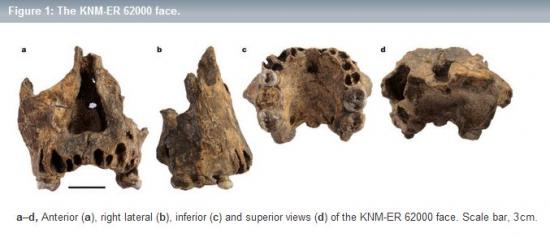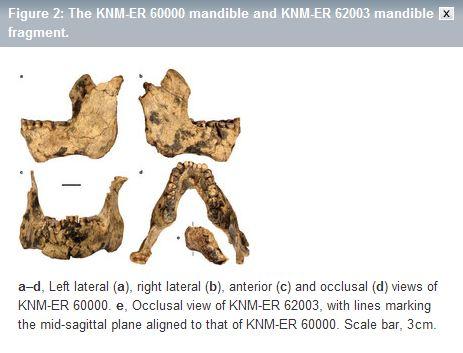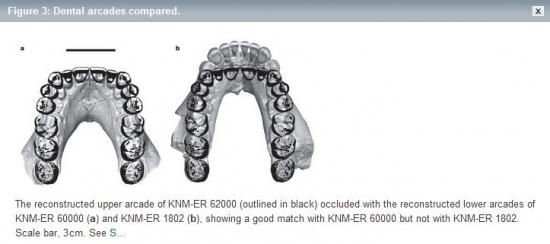Meave G. Leakey, Fred Spoor, M. Christopher Dean, Craig S. Feibel, Susan C. Antón, Christopher Kiarie & Louise N. Leakey
Source - http://www.nature.com/nature/journal/v488/n7410/full/nature11322.html
Since its discovery in 1972, the cranium KNM-ER 1470 has been at the centre of the debate over the number of species of early Homo present in the early Pleistocene epoch of eastern Africa. KNM-ER 1470 stands out among other specimens attributed to early Homo because of its larger size, and its flat and subnasally orthognathic face with anteriorly placed maxillary zygomatic roots. This singular morphology and the incomplete preservation of the fossil have led to different views as to whether KNM-ER 1470 can be accommodated within a single species of early Homo that is highly variable because of sexual, geographical and temporal factors, or whether it provides evidence of species diversity marked by differences in cranial size and facial or masticatory adaptation. Here we report on three newly discovered fossils, aged between 1.78 and 1.95 million years (Myr) old, that clarify the anatomy and taxonomic status of KNM-ER 1470. KNM-ER 62000, a well-preserved face of a late juvenile hominin, closely resembles KNM-ER 1470 but is notably smaller. It preserves previously unknown morphology, including moderately sized, mesiodistally long postcanine teeth. The nearly complete mandible KNM-ER 60000 and mandibular fragment KNM-ER 62003 have a dental arcade that is short anteroposteriorly and flat across the front, with small incisors; these features are consistent with the arcade morphology of KNM-ER 1470 and KNM-ER 62000. The new fossils confirm the presence of two contemporary species of early Homo, in addition to Homo erectus, in the early Pleistocene of eastern Africa.


